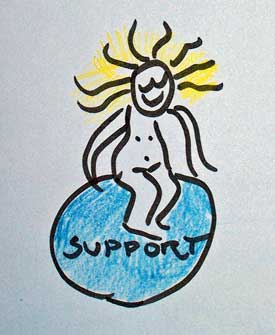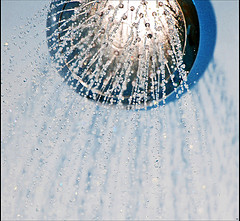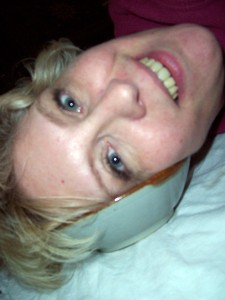
Salt is, of course, necessary for human survival. The search for and trading of salt has impacted trade and the rising and falling of nations. It seasons and preserves food, and as we know, it also has therapeutic uses. Salt is great stuff–you can eat it, gargle with it, and bathe with it.
Of course, it’s also one of the main components of basic body piercing aftercare. In case you missed my obsessive cross-linking, here’s my post on how to do sea salt soaks for your piercings: Like Chicken Soup for your Piercings.
The APP’s standard aftercare recommends a “non-iodized sea salt solution.” That’s all very well, but what exactly is sea salt, where can you find it, and why can’t you just use Morton’s off the shelf?
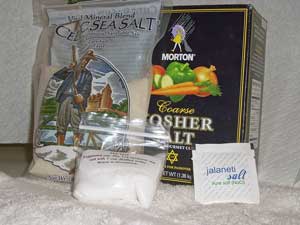
Salt comes either from mines or from the sea, and the nutritional value of each is the same. The chemical composition of salt is NaCl, or sodium chloride. Regular table salt is refined, then anti-caking agents are added for pourability. Iodine is also added as a nutritional supplement. You do not want these additives in your piercing!
There are many varieties of salt. Look for salt which has no additives.
Some people recommend kosher salt, which you can find in your grocery store. Kosher salt is raked during the mining process to produce a fluffy texture which melts well. But look! The box I have, which I use for cooking, has “yellow prussiate of soda” in it added as an anti-caking agent. So, read the labels for any type of salt you are considering purchasing for your sea salt soaks.
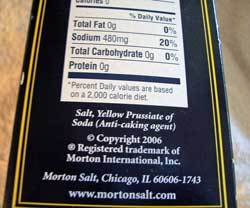
Another type of salt you may find in your grocery store is Celtic Sea Salt, or another brand of gourmet sea salt. This type of salt is off white, almost gray, due to the trace minerals which haven’t been refined out. I use this stuff in food, to brush my teeth for gum therapy, and for therapeutic baths. I personally don’t know what effect these trace minerals have on piercings, so I prefer to use plain, refined NaCl without any additives if I can get it.
Not Epsom salts! Epsom salts (magnesium sulfate) may have therapeutic benefits, but they are not what is recommended for your piercing. Food grade rock salt may be okay (not the crap stuff they sell to put on roads), but remember you want this stuff to dissolve in hot water.

Where to Find Salt for your Aftercare:
–Your piercer. The best studios will have salt available, either for purchase, or given as a freebie with your aftercare instructions. If they don’t have it for sale ask them–why not?
–Your grocery store or health food store. A health food store is often a good bet. I found the individual packets of pure NaCl pictured above sold for use in neti pots (jalneti). Avoid products with anti-caking agents or iodine added.
–Online. Many body jewelry retailers carry salt for aftercare. Here are a couple of sources from my favorite sites:
Jala Neti Pot Salt from Yoga & Life (Neti pots are fabulous health aides too–check them out!)
Note: You can also use pre-packaged sterile solution for your piercing aftercare, which you can buy at a drugstore. Not contact lens solution! Contact lens solution has added stuff!
You can also buy proprietary aftercare solutions, like H2Ocean, containing salt. Let me just say here: I don’t like them! You don’t know exactly what you are getting, and most of them are much more expensive than plain salt. In addition, sprays, while they might be good convenience products for aftercare when you’re on the road or running around, don’t allow for the beneficial effects on your piercing of immersion in hot salt water. All this stuff smacks to me of people just wanting to cash in on the popularity of body piercing, and I can’t see any of it is better than plain, cheap, natural salt therapy. Again, read the labels and know what you are buying.
Some further links to info about salt and salt therapy:
Geology of Salt from About.com
Too much salt is bad for you, but I love it!



 Posted by piercedconsumer
Posted by piercedconsumer 